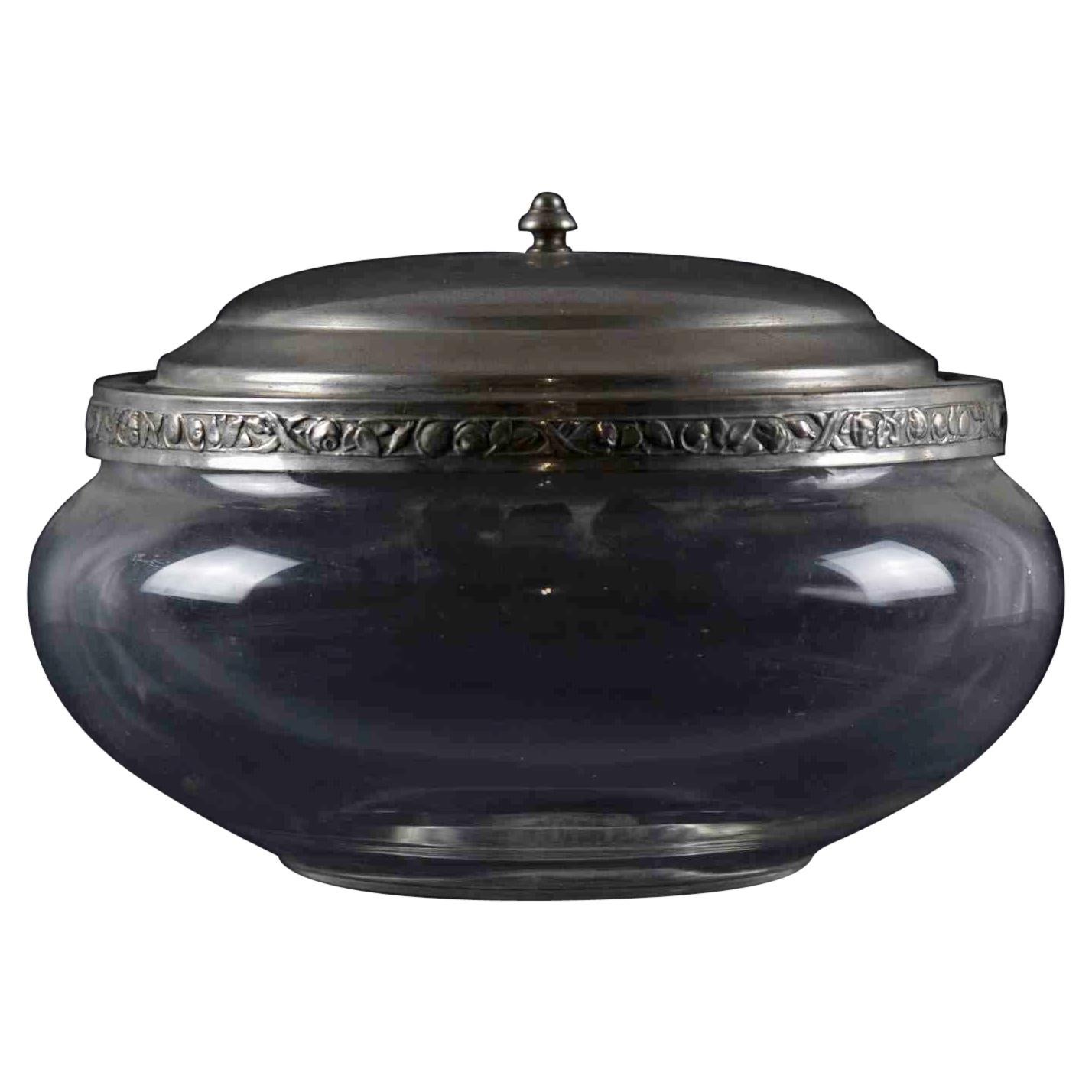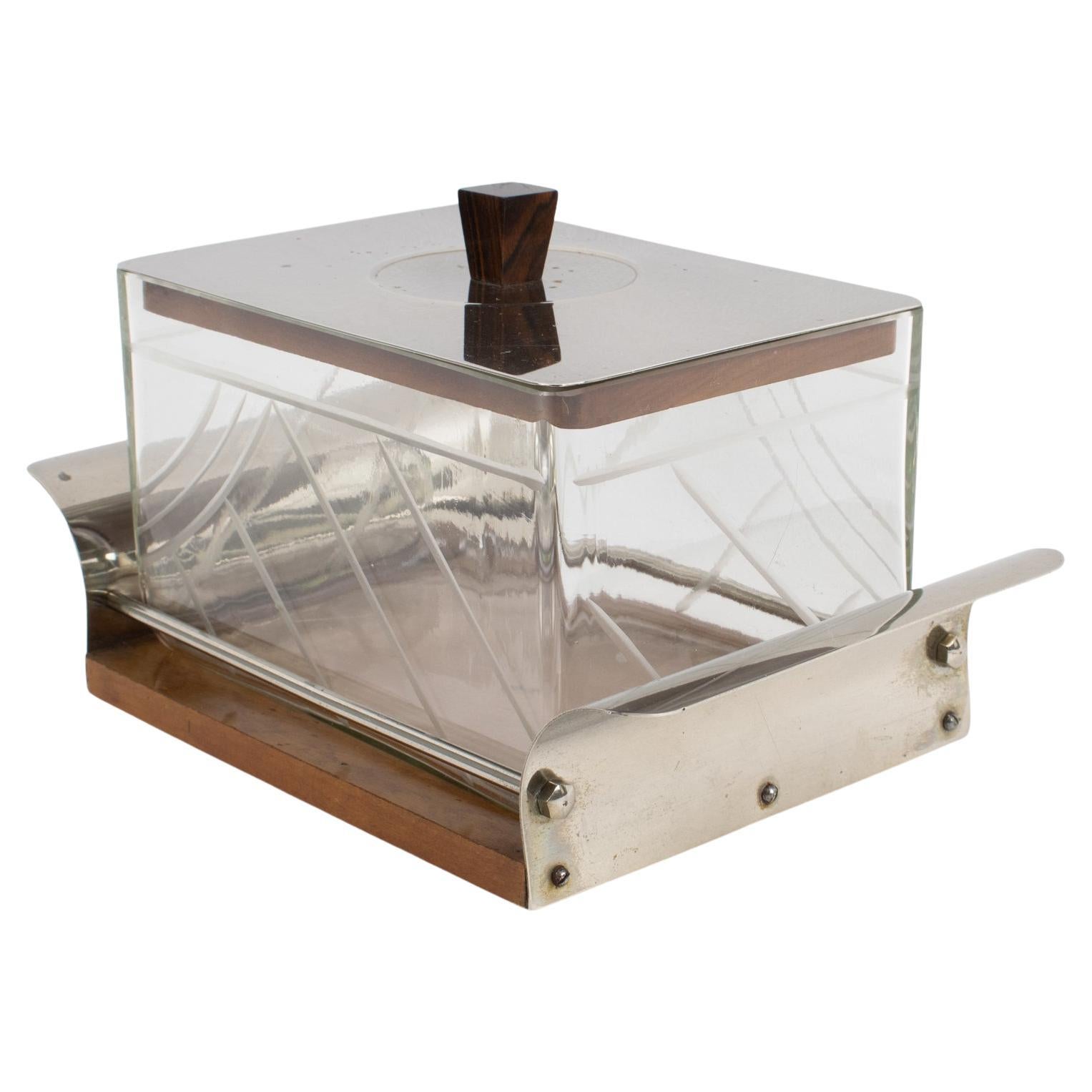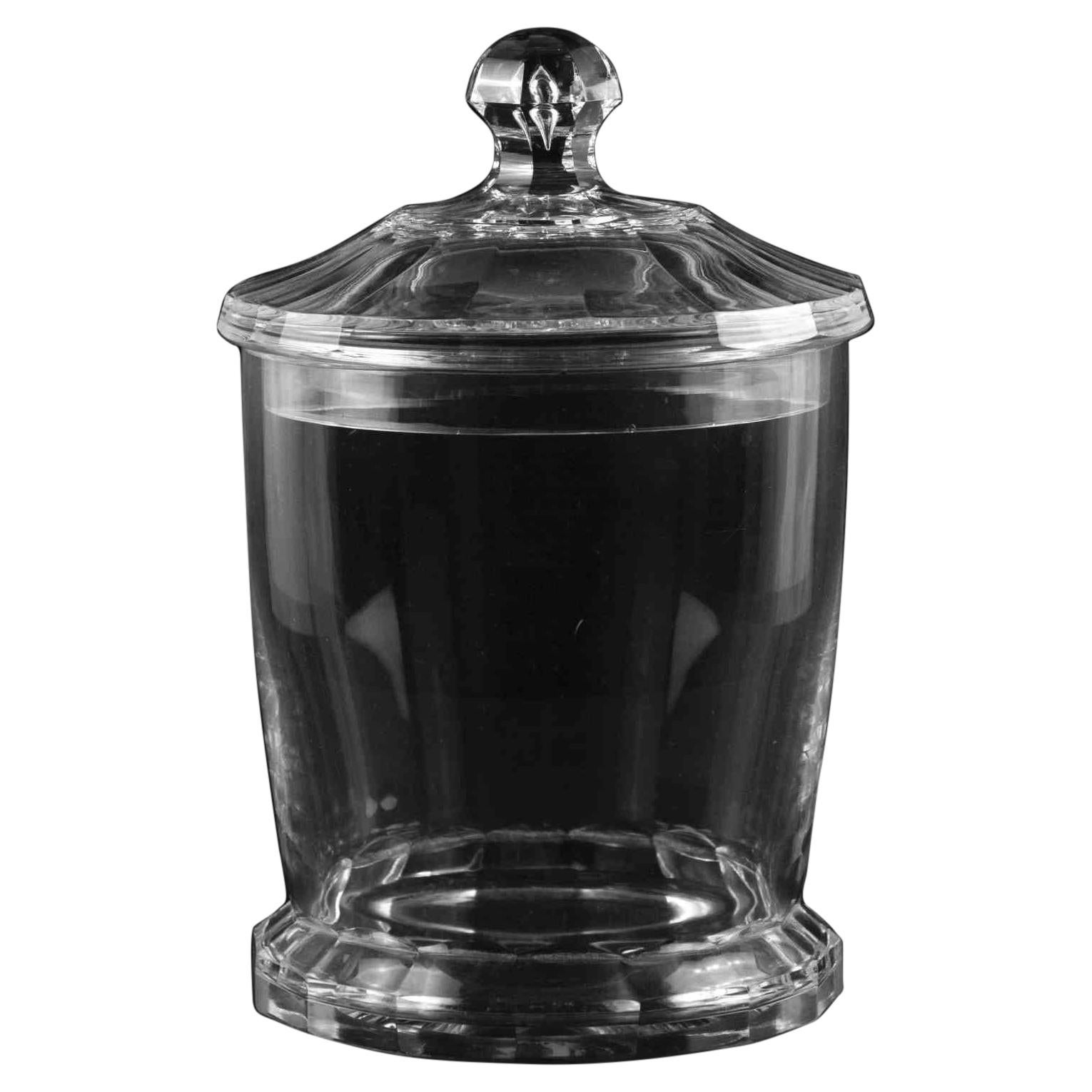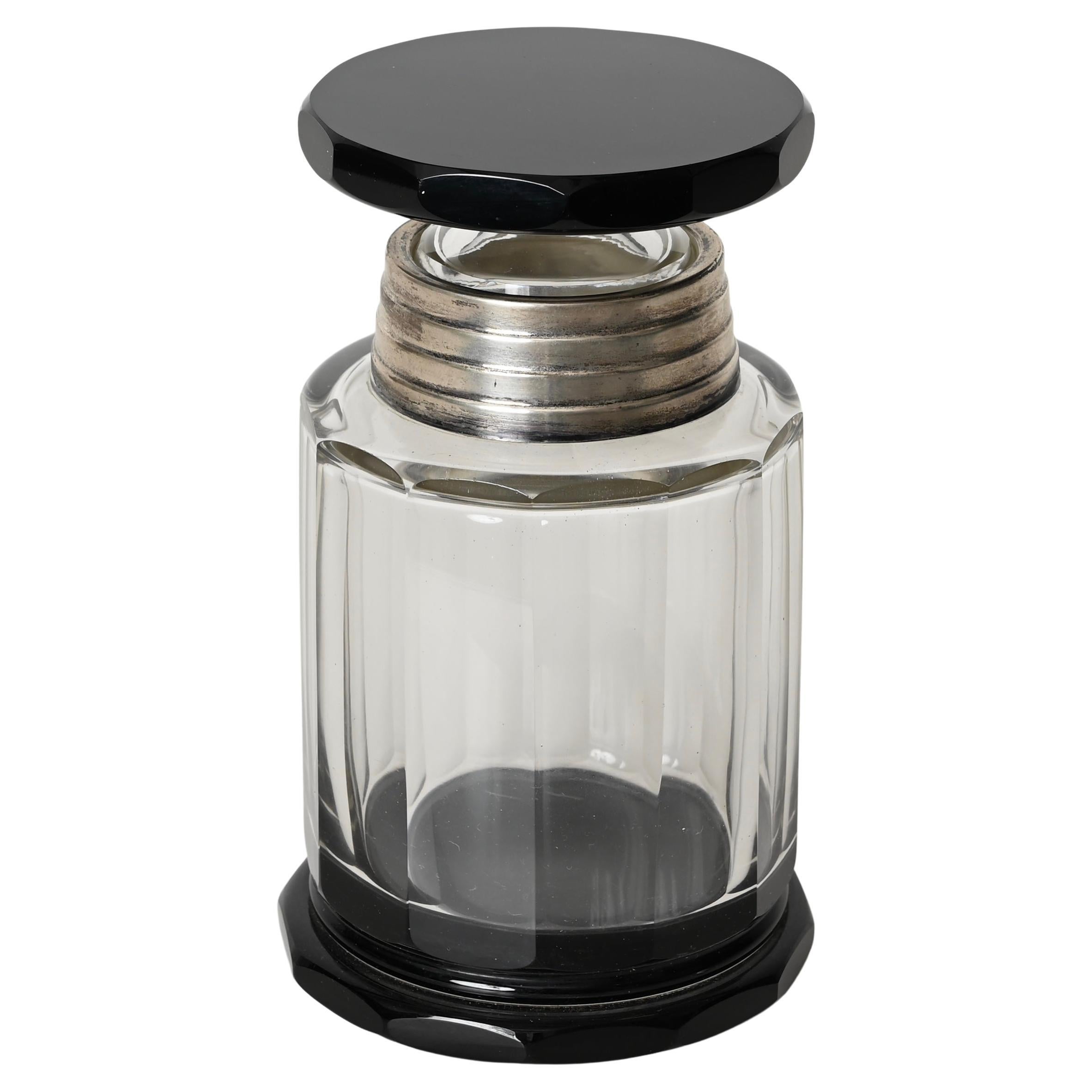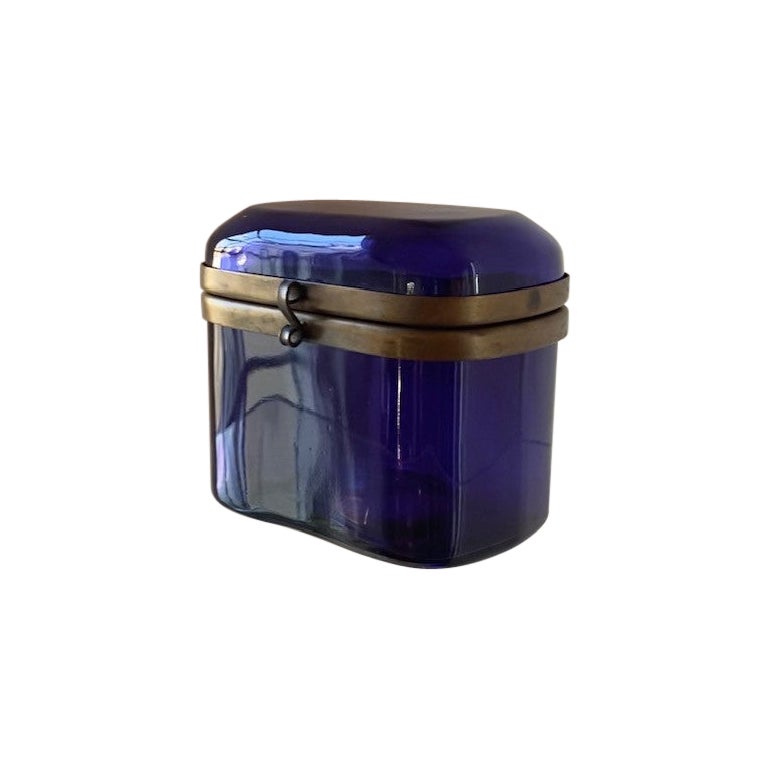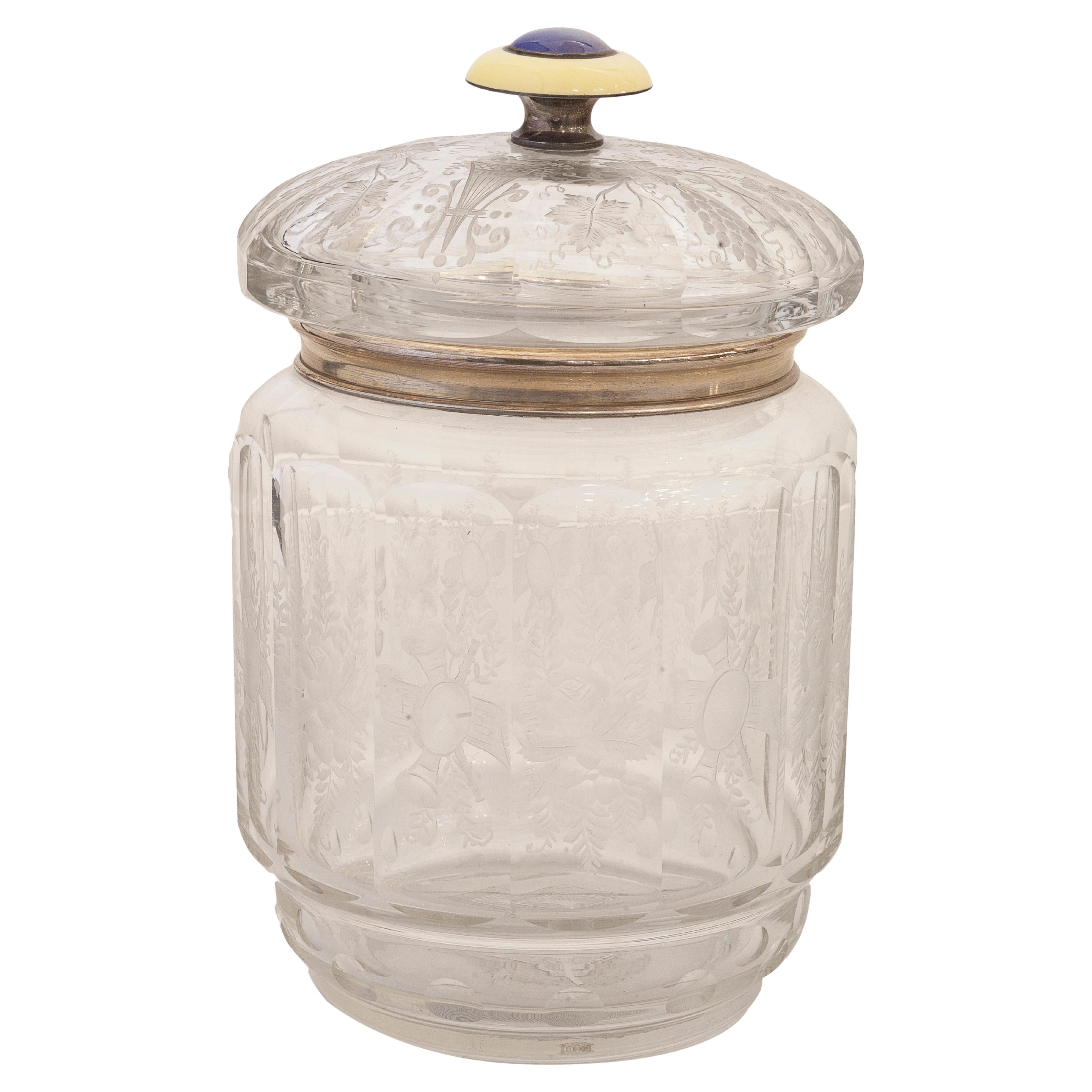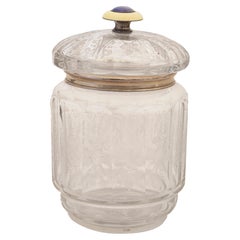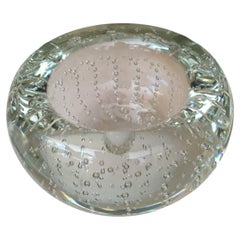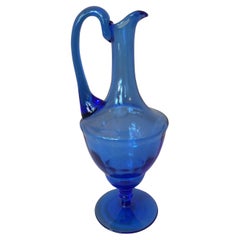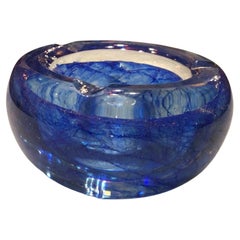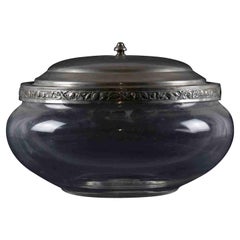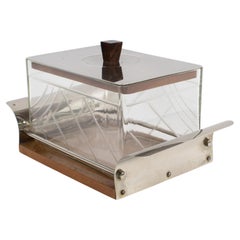Items Similar to Container for candy or cookies in crystal and Murano, 1940
Video Loading
Want more images or videos?
Request additional images or videos from the seller
1 of 22
Container for candy or cookies in crystal and Murano, 1940
$4,500
£3,473.02
€3,953.83
CA$6,425.61
A$7,008.38
CHF 3,692.82
MX$84,049.21
NOK 46,497.32
SEK 43,381.06
DKK 29,528.14
About the Item
We have specialized in the sale of Art Deco and Art Nouveau styles since 1982.If you have any questions we are at your disposal.
Pushing the button that reads 'View All From Seller'. And you can see more objects to the style for sale.
The Vienna Secession was founded on 3 April 1897 by artist Gustav Klimt, designer Koloman Moser, architects Josef Hoffmann and Joseph Maria Olbrich, Max Kurzweil, Wilhelm Bernatzik and others. The architect Otto Wagner joined the group shortly after it was founded. The goals stated at the founding included establishing contact and an exchange of ideas with artists outside Austria, disputing artistic nationalism, renewing the decorative arts; creating a "total art", that unified painting, architecture, and the decorative arts; and, in particular, opposing the domination of the official Vienna Academy of the Arts, the Vienna Künstlerhaus, and official art salons, with its traditional orientation toward Historicism.
The movement took its name from Munich Secession movement that was founded in 1892. The goals of the new movement in Vienna were expressed by the literary critic Hermann Bahr in the first issue of the new journal begun by the group, called Ver Sacrum ("Sacred Spring"). Bahr wrote, "Our art is not a combat of modern artists against those of the past, but the promotion of the arts against the peddlers who pose as artists and who have a commercial interest in not letting art bloom. The choice between commerce and art is the issue at stake in our Secession. It is not a debate over aesthetics, but a confrontation between two different spiritual states."[1]
At the beginning, the Secession had fifty members, and at its first elected the painter Gustav Klimt as its president. Other founding or early members included the architect Josef Hoffmann, the designer Koloman Moser, the designer and architect Joseph Maria Olbrich, and the painters Max Kurzweil and Alphonse Mucha,[2] who resided in Paris and was already famous for his Art Nouveau posters. The established painter Rudolf von Alt, eighty-five years old, was chosen as the Honorary President of the group, and he led a delegation with an invitation to the Emperor Franz-Joseph to attend the first Exposition.
The first architectural project of the Secession was the creation of an exhibit space which would introduce international artists and art movements to Vienna. The architect was Joseph Maria Olbrich, a student of Otto Wagner; and his domed gallery building, with a sculptural frieze over the entrance, in the center of Vienna, became the symbol of the movement. It was the first dedicated gallery of contemporary art in the city.[3] This helped make the French Impressionists and others familiar to the Viennese public.
The 14th Secession exhibition in 1902, designed by Josef Hoffmann and dedicated to Ludwig van Beethoven, was especially famous. A statue of Beethoven by Max Klinger stood at the center, with Klimt's Beethoven frieze mounted around it. The Klimt frieze has been restored and can be seen in the gallery today.
Why are there so many antiques in Argentina?
In the 1880 – 1940 there was a grate wave of immigration encouraged by the periods of war that were taking place.
1st World War took place between 1914 and 1918
2nd World War took place between 1939 and 1945
The immigrants options were New York or Buenos Aires. Tickets were cheap and in Buenos Aires they were welcomed with open arms, as it was a country where everything was still to be done.
Argentina was the country of new opportunities, labour was needed and religious freedom was assured, in many cases the of the family travel first until they were settled and then the rest of the family members join them.
In the immigrant museum “Ellis Island Immigrant Building” in New York you can se the promotional posters of the boats that would take them to a new life.
Between the years 1895 and 1896, Argentina had the highest DGP (gross domestic product) per capita in the world according to the Maddison Historical Statistics index, this situation arose due to the large amount of food being exported to European countries, which were at war.
The Argentinean ships left the port of Buenos Aires with food, but they returned with furniture, clothes and construction elements, (it´s common to see this the old buildings of the historic neighbourhood of San Telmo, the beams with the inscription “Made in England)”, as well as many markets that were built in Buenos Aires, such us the San Telmo Market, whose structure was brought by ship and afterwards assembled in 900 Defensa Street.
With the great influence of European immigrants living in the country, the children of the upper classes travelled to study in France, resulting in the inauguration of “La Maison Argentinienne”, on 27th of June 1928, in the international city of Paris, which hosted many Argentinians that were studying in Frace.
It´s the fourth house to be built after France, Canada and Belgium, being the first Spanish-speaking one. Still in place today (17 Bd Jourdan, 75014, Paris, France). Many of the children of these wealthy families who attended international art exhibitions, museums and art courses abroad, took a keen interest in the European style. This is why Buenos Aires was at the time referred as “The Paris of South America”.
Between the years 1890 and 1920 more than a hundred Palaces were built on Alvear Avenue the most exclusive avenue in Buenos Aires. Today some of these palaces have been transformed into museums, hotels and embassies.
In the year 1936, the Kavanagh building was inaugurated, it was the tallest reinforced concrete building in South America.
During 1994 the American Society of Civil Engineers distinguished it as an “international engineering milestone”, and it´s now considered a World Heritage of Modern Architecture.
At the time was common to hire foreign architects such as Le Corbusier, who visited Buenos Aires/Argentina in 1929 and in 1948 he drew up the blueprints for a house built in La Plata City (which was declared a World Heritage Site).
In 1947, the Hungarian architect Marcelo Breuer designed “Parador Ariston” in the seaside city of Mar del Plata. After an Argentinean student at Harvard University convinced him to come to Argentina. He worked on an urban development project in the Casa Amarilla, area of La Boca.
The Ukrainian architect, Vladimiro Acosta, arrives in Argentina in 1928 and worked as an architect until que moved to Brazil.
Antonio Bonet, a Spanish architect who worked with Le Corbusier in Paris, arrives in Argentina in 1937, where he carried out several architectural works and in 1938 designs the well-known BFK chair.
Andres Kálnay, of Hungarian origin, made around 120 architectural masterpieces, among which the former Munich brewery stands out, he even made the furniture’s design.
The German architect, Walter Gropius, director of the Bauhaus, lived in Argentina, where he wrote articles for “Sur” magazine and founded in Buenos Aires, an architectural firm with Franz Möller, who was also an architect, where he built two houses.
At the same time several famous designers decided to immigrate to Argentina, among them we can find the well-known French designer, Jean-Michel Frank, who arrived in the country in 1940 and also worked for the Rockefeller family.
Special pieces were made, which were sold exclusively in the country, such as the well-known German company “WMF”, who sold their products by catalogue, which were chosen by the ladies of high society in the list of wedding gifts, as well as the pieces designed by Christofle.
The Swiss sculptor Alberto Giacometti, made special pieces for Argentinean mansions.
In 1904 the first Jansen branch outside Paris was established in Buenos Aires, as the Argentinean clientele demanded a large amount of furniture, from the end of the 19th century to the mid-20th century.
In 1970, the brand Rigolleau Argentina made pieces authorised by Lalique.
The brands Maple and Thompson also set up shop in the country.
The French plastic artist, Marcel Duchamp moved to Argentina in 1918-1919.
Glass signed Gallé, Charder, Leverre, Schneider, Muller and other French firms. They were bought in flower shops and were given to ladies with beautiful floral arrangements.
Some furniture manufacturers travelled to international fairs and bough the patterns to produce the furniture in Argentina, such as the furniture firm Englander and Bonta, who bought the patterns ins Italy.
It is worth mentioning that in Argentina we have the largest community of Italians outside of Italy, as it is estimated that 70 percent of the inhabitants have at least one Italian descendant, followed by Spanish immigrants.
The most Important furniture stores in Argentina:
Comte is founded in 1934 (under the direct management of Jean Michel Frank in 1940).
Nordiska (Swedish company established in 1934).
Churba in 1960, a company that brought foreign designers to present their furniture in the country:
Denmark: (Arne Jacobsen, Finn Juhl, Bender Madsen, Ejner Larsen, Poul Kjaerholm, Hans Wegner)
Sweden: (Hans Agne Jakobsson, Gustavsberg)
United States: (Herman Miller)
Finland: (Lisa Johansson, Folke Arstrom, Tapio Wirkkala, Alvar Aalto, Timo Sarpaneva)
Swedish Factory: (Orrefors)
Italy: (Littala, Vico Magistretti, Emma Gismondi, Gae Aulenti, Angelo Mangiarotti, Elio Martinelli, Gianna Celada, Angelo Mangiarotti, Mario Bellini, Carlo Scarpa)
Finland: (Olivia Toikka)
Plata Lappas (Lappas Silver): a goldsmith shop founded in 1887 in Argentina by Alcibiades Lappas of Greek origin.
In 2019, in Argentina took place “the Art Deco world congress”, in which we participated as hosts invited by Geo Darder, founder of the Copperbridge – Foundation, in which prominent people from all over the world attended to learn about Art Deco in Argentina.
Argentina currently has more than 100 Art Deco buildings and another 90 Art Nouveau buildings throughout the city of Buenos Aires.
Argentina is a country that has not been involved in many wars, which is why it has been a refuge for works of art and antiques from different periods of time, unlike European countries. That is way many collectors, museums and antique dealers from all over the world visit it, you should not miss the opportunity to visit this great country.
Laura Guevara Kjuder, architect.
- Dimensions:Height: 8.47 in (21.5 cm)Diameter: 5.91 in (15 cm)
- Style:Art Deco (Of the Period)
- Materials and Techniques:
- Place of Origin:
- Period:
- Date of Manufacture:1940
- Condition:Wear consistent with age and use.
- Seller Location:Ciudad Autónoma Buenos Aires, AR
- Reference Number:Seller: M-9081stDibs: LU6785237747152
About the Seller
5.0
Vetted Professional Seller
Every seller passes strict standards for authenticity and reliability
Established in 1982
1stDibs seller since 2022
40 sales on 1stDibs
Typical response time: <1 hour
- ShippingRetrieving quote...Shipping from: Ciudad Autónoma Buenos Aires, Argentina
- Return Policy
More From This Seller
View AllCandy Maker in Crystal and Enamel, 19th Century
Located in Ciudad Autónoma Buenos Aires, C
We have specialized in the sale of Art Deco and Art Nouveau and Vintage styles since 1982. If you have any questions we are at your disposal.
Pushing the button that reads 'View All ...
Category
Antique Early 1900s French Belle Époque Decorative Boxes
Materials
Crystal, Enamel
Murano 1940, Italian
Located in Ciudad Autónoma Buenos Aires, C
Murano
We have specialized in the sale of Art Deco and Art Nouveau and Vintage styles since 1982. If you have any questions we are at your disposal.
Pushing the button that reads 'Vi...
Category
Vintage 1940s Italian Art Deco Tobacco Accessories
Materials
Murano Glass
$3,000
Jar Murano, 1930, Italian. Attributed to Carlo Scarpa
By Carlo Scarpa
Located in Ciudad Autónoma Buenos Aires, C
Murano
Attributed to Carlo Scarpa
Carlo Scarpa
Scarpa was born in Venice. Much of his early childhood was spent in Vicenza, where his family relocated when he was 2 years old. After his mother's death when he was 13, he moved with his father and brother back to Venice. Carlo attended the Academy of Fine Arts where he focused on architectural studies. Graduated from the Accademia in Venice, with the title of Professor of Architecture, he apprenticed with the architect Francesco Rinaldo. Scarpa married Rinaldo's niece, Nini Lazzari (Onorina Lazzari).
However, Scarpa refused to sit the pro forma professional exam administered by the Italian Government after World War II. As a consequence, he was not permitted to practice architecture without associating with an architect. Hence, those who worked with him, his clients, associates, craftspersons, called him "Professor", rather than "architect".
His architecture is deeply sensitive to the changes of time, from seasons to history, rooted in a sensuous material imagination. He was Mario Botta's thesis adviser along with Giuseppe Mazzariol; the latter was the Director of the Fondazione Querini Stampalia when Scarpa completed his renovation and garden for that institution. Scarpa taught drawing and Interior Decoration at the "Istituto universitario di architettura di Venezia" from the late 1940s until his death. While most of his built work is located in the Veneto, he made designs of landscapes, gardens, and buildings, for other regions of Italy as well as Canada, the United States, Saudi Arabia, France and Switzerland. His name has 11 letters and this is used repeatedly in his architecture.
One of his last projects, the Villa Palazzetto in Monselice, left incomplete at the time of his death, was altered in October 2006 by his son Tobia. This work is one of Scarpa's most ambitious landscape and garden projects, the Brion Sanctuary notwithstanding. It was executed for Aldo Businaro, the representative for Cassina who is responsible for Scarpa's first trip to Japan. Aldo Businaro died in August 2006, a few months before the completion of the new stair at the Villa Palazzetto, built to commemorate Scarpa's centenary.
In 1978, while in Sendai, Japan, Scarpa died after falling down a flight of concrete stairs. He survived for ten days in a hospital before succumbing to the injuries of his fall. He is buried standing up and wrapped in linen sheets in the style of a medieval knight, in an isolated exterior corner of his L-shaped Brion Cemetery at San Vito d'Altivole in the Veneto.
In 1984, the Italian composer Luigi Nono...
Category
Vintage 1930s Italian Art Deco Glass
Materials
Murano Glass
Murano, 1940, Italian
Located in Ciudad Autónoma Buenos Aires, C
Murano
We have specialized in the sale of Art Deco and Art Nouveau and Vintage styles since 1982. If you have any questions we are at your disposal.
Pushing the button that reads 'V...
Category
Vintage 1940s Italian Art Deco Ashtrays
Materials
Murano Glass
$1,550
Box in glass, Style: Viennese secession, made in France
Located in Ciudad Autónoma Buenos Aires, C
Box in art Glass
We have specialized in the sale of Art Deco and Art Nouveau and Vintage styles since 1982. If you have any questions we are at your disposal.
Pushing the button that...
Category
Antique Early 1900s French Vienna Secession Glass
Materials
Art Glass
Murano, 1930, Italian, Attributed to Paolo Venini-Seguso
By Paolo Venini
Located in Ciudad Autónoma Buenos Aires, C
Murano
We have specialized in the sale of Art Deco and Art Nouveau and Vintage styles since 1982. If you have any questions we are at your disposal.
Pushing the button that reads 'View All From Seller'. And you can see more objects to the style for sale.
Attributed to Venini
Early life and education
Venini was born in the town of Cusano near Milan, Italy. After serving in the Royal Italian Army in World War I, he trained as a lawyer[2] and began his practice in Milan. He soon developed an acquaintance with Giacomo Cappellin, a native of Venice who owned a Milan antiques...
Category
Vintage 1930s Italian Art Deco Ashtrays
Materials
Murano Glass
You May Also Like
Vintage Glass Candy Box, Mid-20th Century
Located in Roma, IT
Glass candy box is an original decorative object realized in the mid-20th century.
A vintage decorated candy box entirely realized in glass with pew...
Category
Mid-20th Century Italian Serving Pieces
Materials
Glass
$177 Sale Price
40% Off
Art Deco Wood and Crystal Cookie Box Candy Jar, France 1930s
By Art de France
Located in Atlanta, GA
This refined Art Deco decorative cookie box or candy jar, with a serving bowl insert, was crafted in France in the 1930s. Its modernist design boasts a chromed metal and wood holder ...
Category
Vintage 1930s French Art Deco Decorative Boxes
Materials
Crystal, Metal, Chrome
Vintage Glass Candy Box, 1970s
Located in Roma, IT
Glass candy box is an original decorative object realized in the 1970s.
Transparent glass object perfect to preserve your candies and give elegance ...
Category
Vintage 1970s Italian Decorative Boxes
Materials
Glass
$170 Sale Price
40% Off
Italian Deco Crystal Box or Vase with Silver Lid, Italy, 1930s
Located in Roma, IT
Gorgeous Art Deco Italian vase in a beautiful combination Murano crystal cut glass, black glass and 800 silver. Produced in Italy during the late 1930s, in amazing condition with no ...
Category
Vintage 1930s Italian Art Deco Jewelry Boxes
Materials
Crystal, Silver
Vintage 1950s Murano Glass Glass Box with Brass Detail Made in Italy
Located in San Diego, CA
Vintage and rare murano glass box with brass detail. These beautiful glass boxes are treasured objects that stand the test of time with their incredible beauty and craftmanship. Cr...
Category
Vintage 1950s Italian Mid-Century Modern Decorative Boxes
Materials
Brass
Italian Art Nouveau Rock Crystal Jar with Lid – Faceted Cut and Ornamental Mount
Located in Hamburg, DE
This exquisite lidded jar, which could also serve as a bonbonnière or sugar bowl, is crafted from approximately 1 kilogram of hand-carved rock crystal. The crystal body has been care...
Category
Antique 1890s Italian Art Nouveau Decorative Boxes
Materials
Rock Crystal, Metal
More Ways To Browse
Vintage Candy Dishes
Vintage Cookies
19th Century European Still Life Paintings
Metal Container
Franz Joseph
Murano Glass Candies
Murano Glass Candy
Cookie Art
Vintage Metal Container
Vintage Metal Containers
Art Deco Candy
Josef Maria Olbrich
Ludwig Van Beethoven
Candy Container
Enamel Trinket Box
Round Wood Box
Victorian Paper Mache
Antique Bonbonniere
